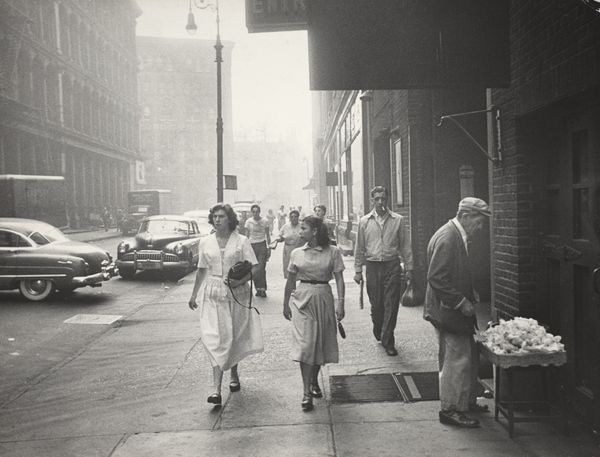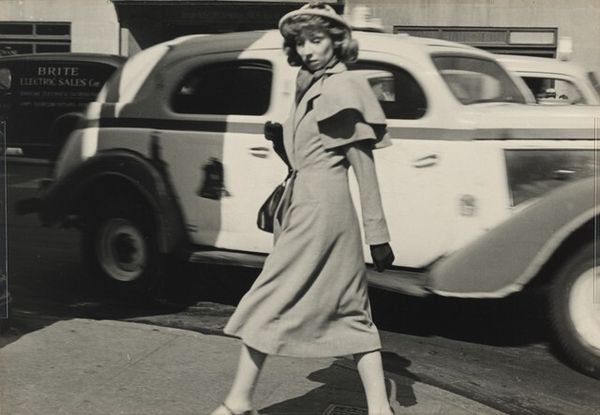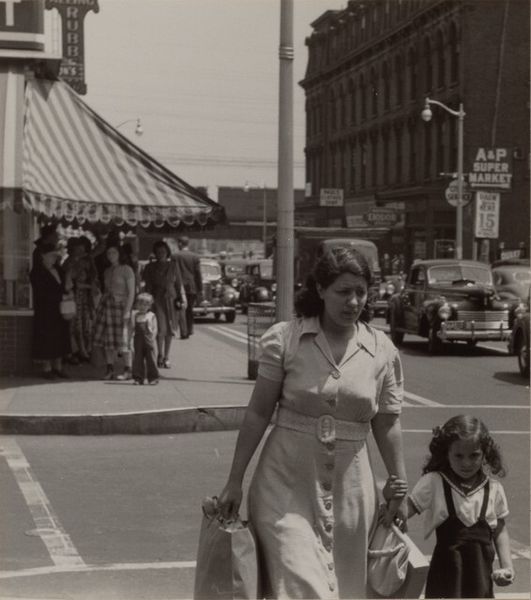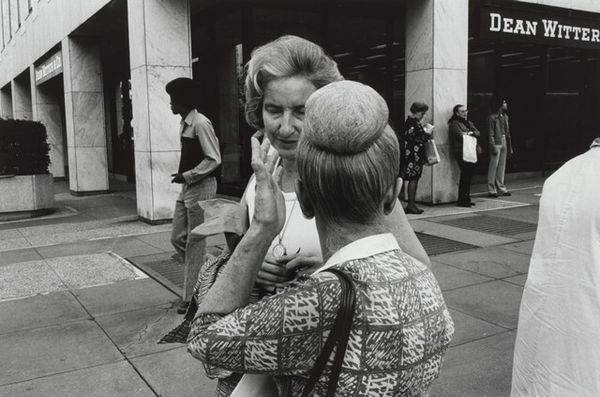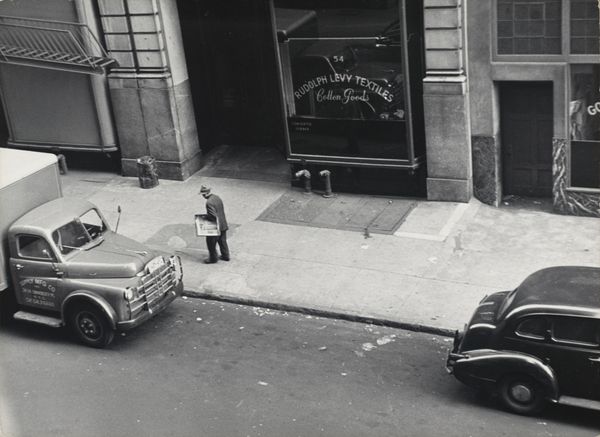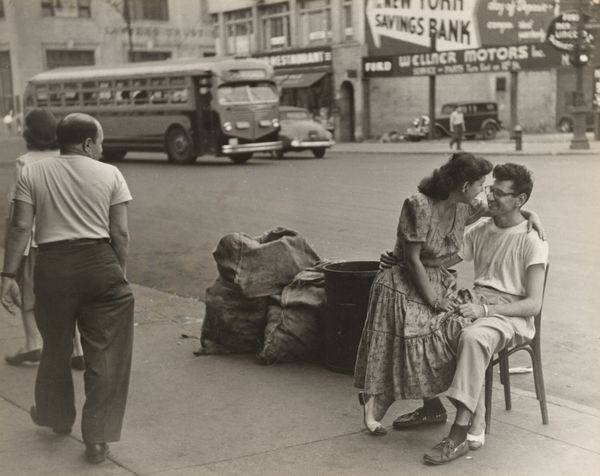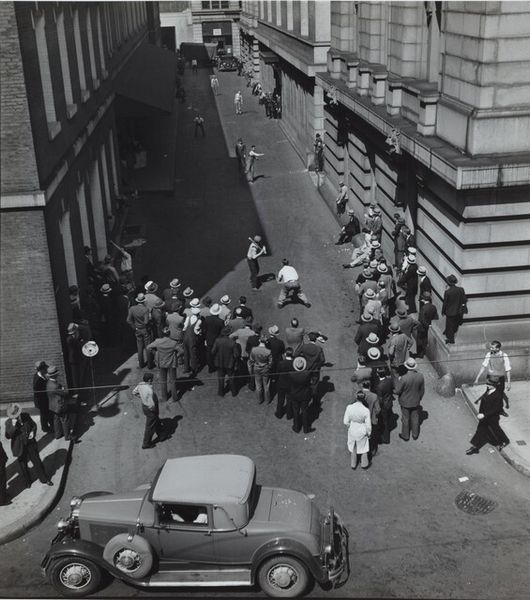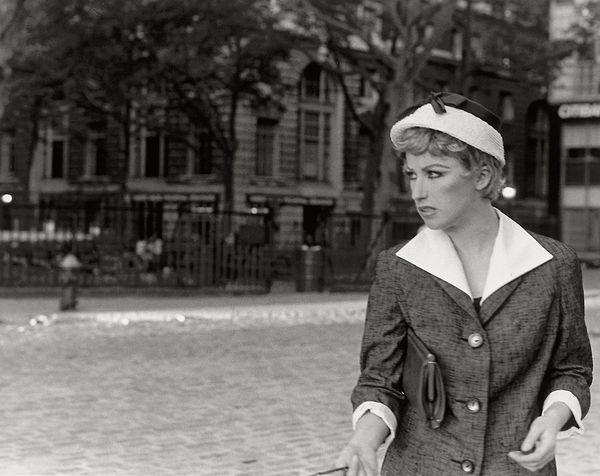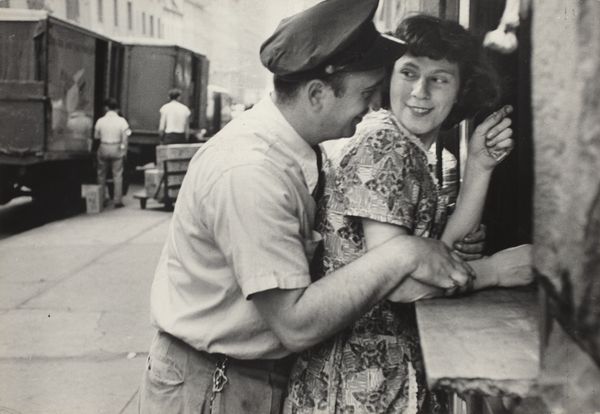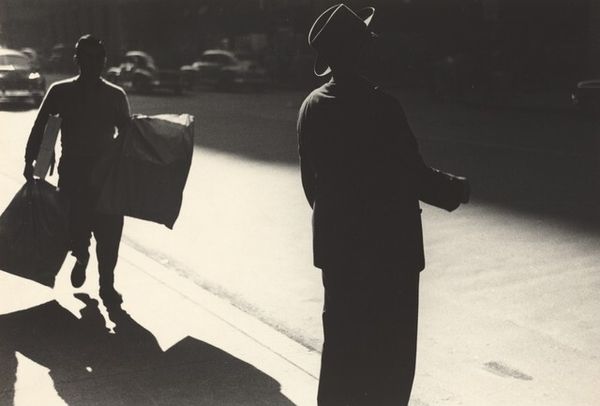
At 3:30 Connie goes across the street to Benny's to get some coffee for her boss. 1951
0:00
0:00
photography, gelatin-silver-print
#
portrait
#
landscape
#
street-photography
#
photography
#
gelatin-silver-print
#
monochrome photography
#
street photography
#
realism
#
monochrome
Dimensions: sheet (trimmed to image): 23.4 x 34.2 cm (9 3/16 x 13 7/16 in.)
Copyright: National Gallery of Art: CC0 1.0
Editor: We're looking at Robert Frank's "At 3:30 Connie goes across the street to Benny's to get some coffee for her boss," a gelatin silver print from 1951. The bustling street scene and the figure of Connie seem almost caught in a moment of quiet contemplation amid the chaos. What stands out to you? Curator: Note how Frank utilizes the stark contrast of light and shadow. The foreground is dominated by the weighty forms of vehicles, creating a strong visual barrier, while Connie is situated within this structured environment. Do you see how Frank employs line and shape to compartmentalize the frame? Editor: I see the way the vehicles sort of frame her, almost like she's navigating an obstacle course. Curator: Precisely. The linear perspective of the buildings receding into the distance is interrupted by the imposing geometry of the trucks. This disruption directs the viewer’s attention back to Connie, a lone figure who anchors the entire picture. Her gesture of looking, seemingly undirected, contributes to a certain level of complexity within an otherwise straight-forward composition. Observe, the visual rhyme created by the rounded forms of the vehicles. Does this affect the overall structure? Editor: It creates a kind of rhythm within the industrial landscape, contrasting with the rigid building facades in the distance. Curator: An astute observation. Frank’s emphasis is on the interplay of form, not necessarily narrative. While we might speculate about Connie’s destination, the photograph’s success resides in its ability to freeze a moment in time, immortalized through formal structures and tonal contrasts. Editor: So, it's less about who Connie *is*, and more about what she *represents* within the overall structure? Curator: In essence, yes. The narrative element serves primarily to initiate an entry into the composition, but the true focus rests on its carefully considered geometry and orchestration of tonal values. A semiotic understanding also provides entrypoints into appreciating the forms and values within the composition, wouldn't you agree? Editor: I hadn’t thought of it that way before, but focusing on the visual structure helps me see past the documentary aspect. Thank you.
Comments
No comments
Be the first to comment and join the conversation on the ultimate creative platform.


